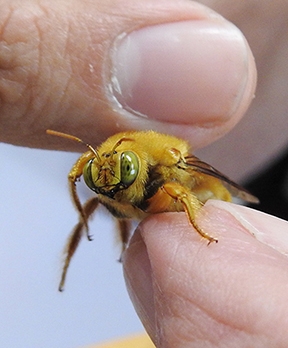
Despite other major attractions--including the gorgeous spring day and the March Madness basketball tournament--nearly 300 people visited the UC Davis Bohart Museum of Entomology last Saturday during its three-hour open house, themed "Eggs to Wings: Backyard Butterfly Gardening."
They conferred with Lynn Kimsey, director of the Bohart Museum and professor of entomology at UC Davis; Robbin Thorp, distinguished emeritus professor of entomology; Tabatha Yang, education and outreach coordinator; and a number of Bohart associates, including entomologist Jeff Smith, who curates the moth and butterfly display; naturalist Greg Kareofelas, a butterfly and dragonfly enthusiast; entomologists Jessica Gillung and Ziad Khouri, doctoral candidates; Nicole Tam, junior specialist; and Joel Hernandez and Alex Nguyen, recent entomology graduates.
"Hungry, hungry caterpillars!" read one poster, illustrated with photos of the monarch, gulf fritillary and pipevine swallowtail caterpillars and their adult stages. "Having a garden full of flowers provides nectar, an important food source for adult butterflies, but what about their hungry, hungry caterpillars? It seems counterintuitive to grow plants that yu want insects to eat, but that is exactly what butterflies need when they are larvae."
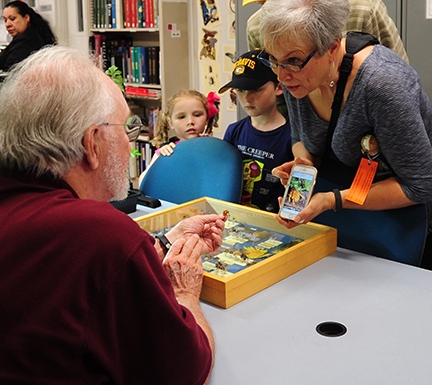
Jeff Smith kept busy showing visitors the drawers of butterfly specimens, including blue morphos, monarchs and swallowtails. As he opened one drawer, he explained that "this drawer contains several species of South American rainforest butterflies, Preponas, in the genus Archaeoprepona." He described them as "extremely strong and fast fliers, but they love to settle on baits such as fermenting fruit on the ground. We (Bohart team) caught several in the ongoing Belize biodiversity work this past year."
Robbin Thorp showed live male Valley carpenter bees, Xylocopa varipuncta, green-eyed blond bees that are also known as "teddy bear" bees. "Boy bees can't sting," Thorp said, reassuring a few leary visitors. The female of the species is solid black. (Following the open house, Thorp returned the bees to the UC Davis Department of Entomology and Nematology's Häagen-Dazs Honey Bee Haven on Bee Biology Road.)
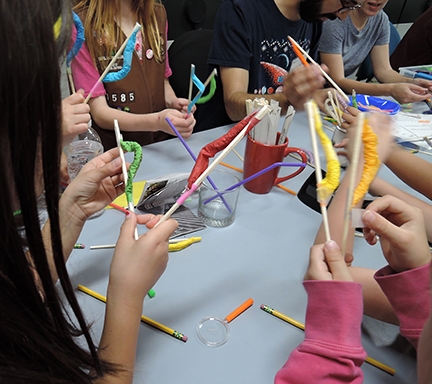
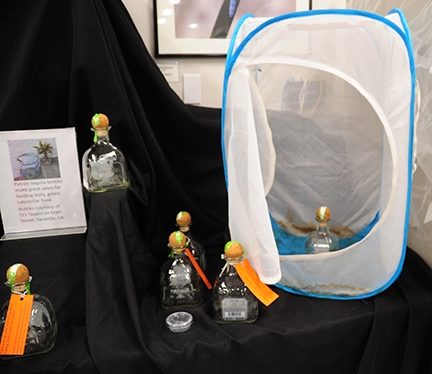
The bottle is tucked inside a zipped, meshed butterfly habitat and placed indoors or in a screened patio to prevent tachinid flies and wasps from laying their eggs in the caterpillars or chrysalids. Once the monarchs pupate and eclose, they are released to start another generation. This is a small-scale conservation project.
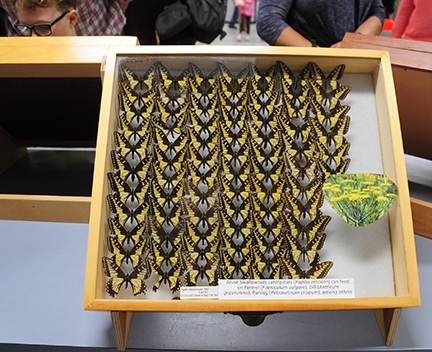
The Bohart Museum's regular hours are from 9 a.m. to noon and 1 to 5 p.m. Mondays through Thursdays. The museum is closed to the public on Fridays, Saturdays and Sundays and on major holidays. Admission is free. Special open houses take place throughout the academic year. The next open house takes place during the annual campuswide Picnic Day on April 22.
More information on the Bohart Museum is available by contacting (530) 752-0493 or bmuseum@ucdavis.edu. The website is http://bohart.ucdavis.edu/
Attached Images:
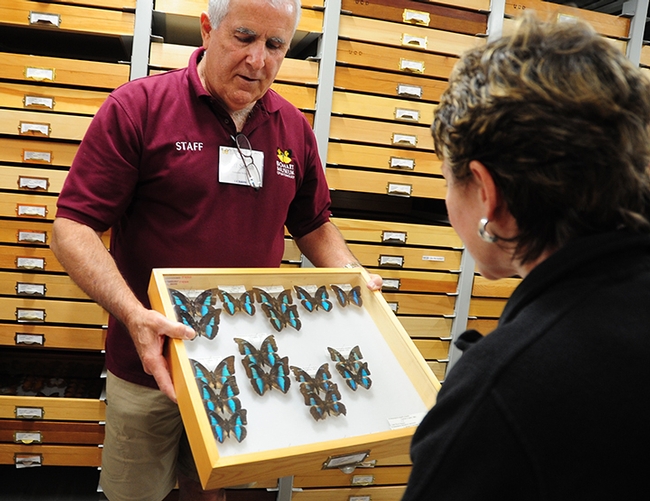
Entomologist Jeff Smith, who curates the butterfly and moth display at the Bohart, shows South American rainforest butterflies, Preponas, in the genus Archaeoprepona to butterfly-bee enthusiast Ria deGrassi of Davis. (Photos by Kathy Keatley Garvey)
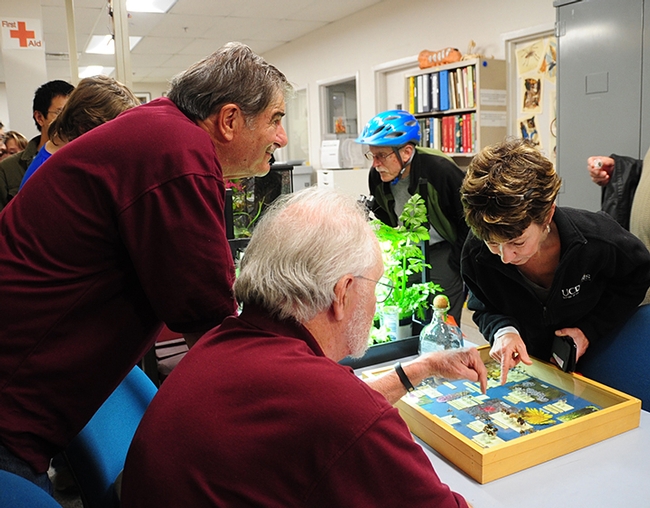
Davis resident Ria deGrassi talks about finding an unusual bee in her yard. At left are Robbin Thorp (foreground), UC Davis distinguished emeritus professor of entomology, and Bohart associate Greg Kareofelas (next to him).
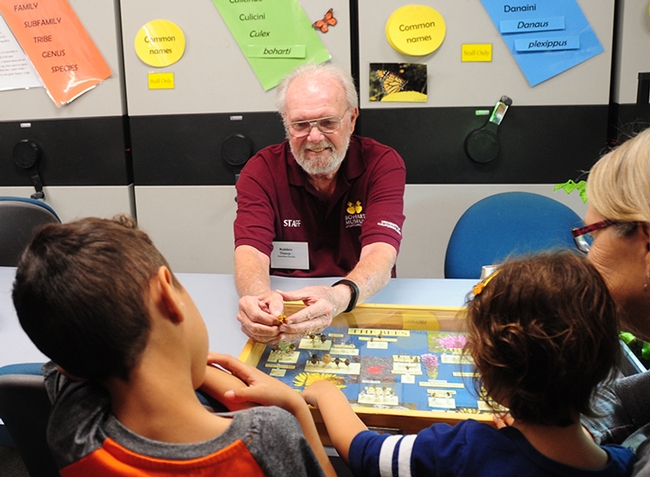
Robbin Thorp, UC Davis distinguished emeritus professor of entomology, displays a male Valley carpenter bee, aka "teddy bear." He assured visitors: "Boy bees can't sting."
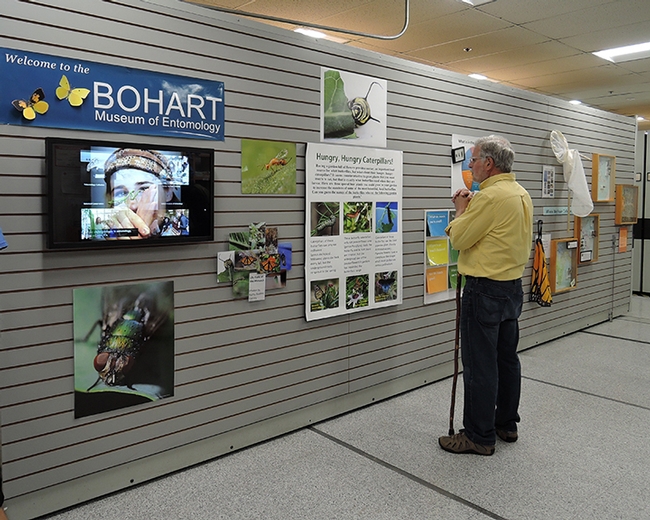
A visitor stops to read a poster at the close of the Bohart Museum open house.